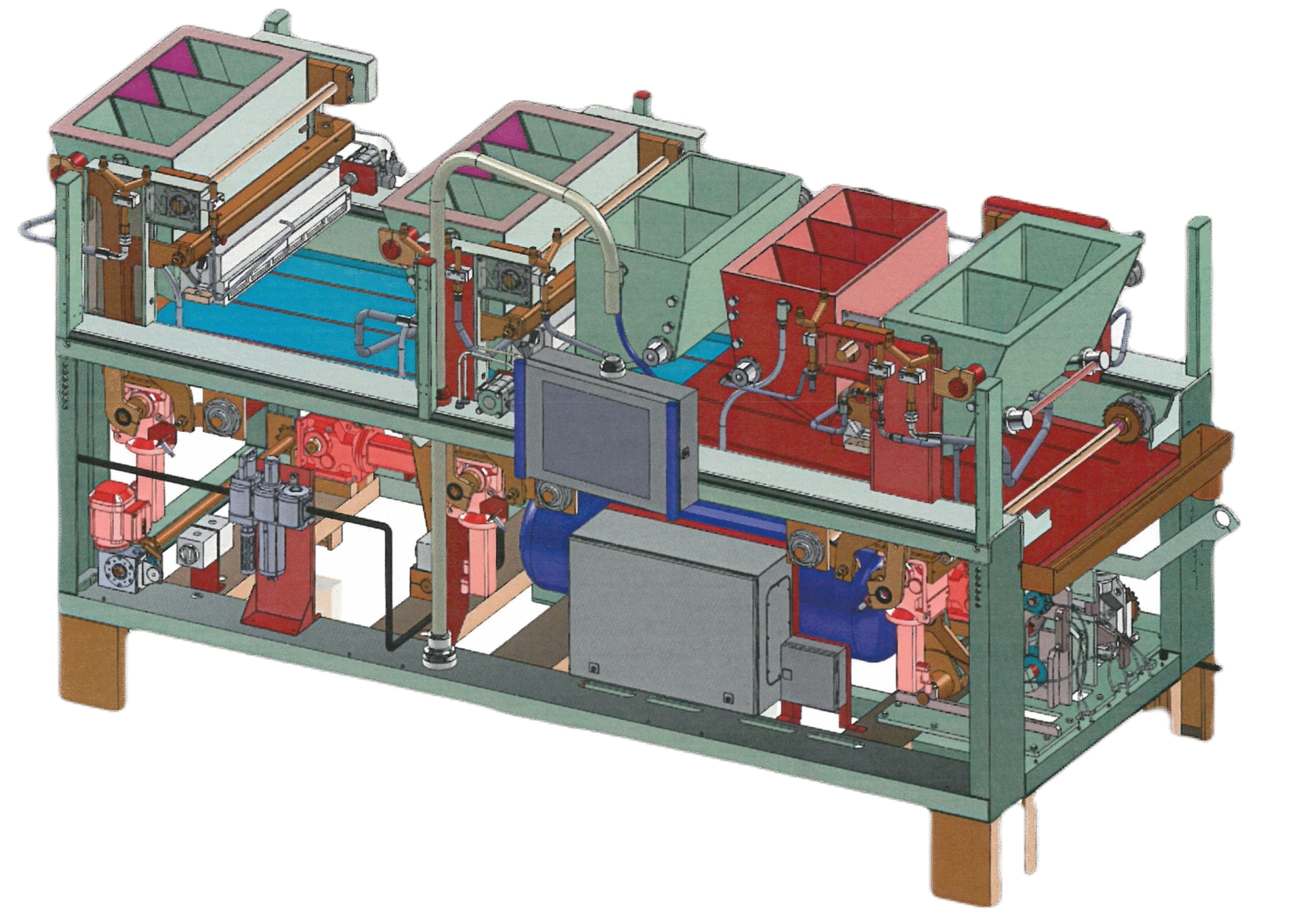Solving Design Challenges, Line by Line
The Cost of Guesswork is More Than You Think
Imagine work stopping and your team standing around because of a small mistake in a plan. Every delay, every time a crew has to re-measure, and every bit of wasted material costs you money. This isn't just a headache—it's a constant drain on your profits and a silent threat to your reputation. Your most successful competitors aren't dealing with these problems; they are running their projects smoothly and winning new business. The real cost of a bad plan isn't the drawing itself—it's all the money and opportunities you're missing out on every single day.
Our Services
-
Don't let costly mistakes and unexpected failures be the defining feature of your projects. Your most successful competitors are already ensuring their systems are precise, efficient, and reliable from the start. We help you get there.
Mechanical Engineering
Imagine your machinery and components fitting perfectly the first time, every time. While others are losing time and money on fabrication errors and assembly issues, we provide the precision that guarantees a smooth workflow.
Detailed Drawings & Manufacturing Instructions: The most innovative machinery is built on flawless instructions. Don't let vague plans slow down your production line or compromise the quality of your equipment.
Manufacturing Instructions: Your competitors are delivering projects with clear, concise instructions that leave no room for error. Don't get stuck with costly rework because of guesswork.
Electrical Engineering
The integrity of any structure depends on its power. Don’t risk safety issues or inefficient systems due to poor planning. While others are dealing with system failures and expensive rewiring, we ensure your electrical infrastructure is safe, reliable, and future-proof.
Electrical Schematics & Wiring Diagrams: A clean, clear electrical schematic is the blueprint for a safe and efficient system. Don't compromise on safety or get bogged down by confusing wiring.
Power Distribution Plans: Your peers are optimising their power distribution for peak performance and lower energy costs. Don't let an inefficient layout eat away at your budget.
Lighting and Communication Systems: Stay ahead of the curve with smart, integrated systems. While others are installing outdated infrastructure, you could be designing spaces that are ready for the future.
-
The most successful companies in high-stakes fields aren’t just competing—they're setting the standards for precision and innovation. While others are struggling with outdated designs and costly failures, we help you secure your advantage and dominate your domain.
Environmental Engineering
Today’s market demands a commitment to sustainability. Don’t get left behind. While your competitors are building their reputation on eco-friendly, compliant projects, a lack of precise environmental planning can lead to regulatory fines, reputational damage, and missed opportunities. We ensure your designs are not only cutting-edge but also environmentally responsible.
Environmental Cleanup & Water Treatment: Leading firms are already implementing state-of-the-art waste management and water treatment solutions. Don't let your projects be defined by inefficiency or non-compliance.
Sustainable Practices: The future of engineering is green. While others are playing catch-up, we help you implement eco-friendly solutions that reduce costs and attract new business.
Product Design & Manufacturing
In the race to market, precision is everything. Don’t risk product recalls, manufacturing delays, or market failure due to poor design. While others are facing these setbacks, we give you the tools to succeed.
Consumer Products: The best products are built with flawless design. Don’t let a design flaw derail your next big gadget or furniture line.
Industrial Equipment: Your competitors are relying on highly efficient, durable machinery. We provide the blueprints to build equipment that gives you a competitive edge.
Manufacturing Process Designs: The most profitable companies have seamless production journeys. Don't get stuck with a fragmented process that wastes time and money.
Government and Large Sectors
Failure is not an option. Don't risk disqualification or operational failure because of a lack of detail. While others are securing lucrative, mission-critical projects with rock-solid plans, we ensure your designs are precise, reliable, and built to the highest standards.
Defence Engineering: The integrity of aerospace and marine components is non-negotiable. Don't let an imprecise design compromise the security or performance of a critical system.
Oil and Gas Facilities: Your peers are building facilities for maximum safety and efficiency. We help you design refineries and pipelines that meet rigorous industry standards and prevent costly shutdowns.
Telecommunications Infrastructure: The world runs on reliable communication. We provide the precise designs for antennas, towers, and communication equipment that keep you ahead of the curve.
HVAC Systems: While others are dealing with inefficient and unreliable heating and cooling, we help you design systems that perform flawlessly and keep operational costs low.
Process and Piping Design: An optimised layout and pipe routing can be the difference between a profitable facility and a failing one. We ensure your industrial processes are streamlined for peak performance.
-
While others are stuck correcting errors and facing costly delays, the most successful firms are building the future with absolute confidence. They're not just hoping their projects work; they know they will, because their plans are flawless.
Infrastructure Projects
Imagine your team breaking ground on a major infrastructure project—be it a new road, a complex overpass, or a vital water system—with a foundation of perfect technical drawings. The firms we work with don't waste time on guesswork. They're delivering projects on time and on budget, taking pride in building the infrastructure that communities rely on. The difference between a project that stalls and one that sets a new standard for excellence is in the details, and the most successful firms have already mastered this.
Structural Engineering
Confidence isn't a luxury; it's a necessity in structural engineering. Our partners have moved past the anxiety of rework or potential structural failures. They are building with the absolute certainty that every beam, every column, and every foundation is designed to perfection. Their projects, from individual building components to complex reinforcement details, are a testament to quality, and they are winning bigger bids because of it. Don't let a lack of precision put your projects at risk. Your competitors have already moved forward.
-
Architectural Design
Imagine your competitors’ projects are running on time and on budget, while you're stuck in a loop of costly revisions and unexpected problems. We help you skip the hassle and move straight to success.
Residential Buildings: The most sought-after homes are built from flawless plans. Don't let your dream project become a nightmare of delays.
Commercial Spaces: While other businesses are attracting customers with smart, efficient layouts, a poorly planned space could be costing you revenue. We ensure your design works as hard as you do.
Industrial Facilities: Your competition is building factories and warehouses for maximum efficiency and future growth. Don’t let an outdated design become a bottleneck that limits your potential.
Landscape Architecture
The most valuable properties and public spaces are the ones that are both beautiful and functional. We help you create them without the endless setbacks.
Outdoor Spaces & Project Design: Your property's value is often defined by its outdoor areas. Don't miss out on the opportunity to create a stunning, sustainable environment that sets your project apart and leaves others envious.
Our Portfolio
Your Vision, Designed and Drafted
Our Success Stories
While your competitors are only dreaming about their next big project, our clients are already living it. Our portfolio isn't just a gallery of past work; it's undeniable proof of the flawless, on-time, and profitable projects your business could be achieving. Every success story you see here started as a simple idea, and we turned it into a truly excellent result. Don't let your next great idea be left behind.
What our customers say




